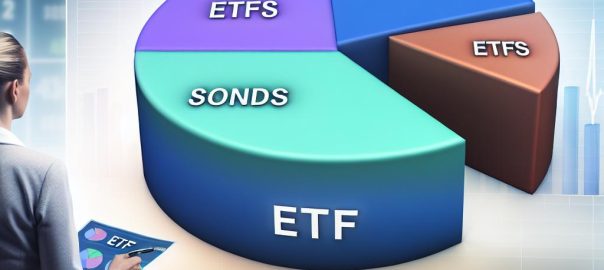The Role of ETFs in a Retirement Portfolio
Exchange-Traded Funds (ETFs) have increasingly become a key component of retirement portfolios for their versatility and cost-effectiveness. These financial instruments provide a convenient method for diversifying investments without the necessity of actively managing individual stocks or bonds. In recent years, their popularity has surged as they present a simplified avenue for individuals looking to build robust retirement savings.
Understanding ETFs
ETFs are investment vehicles that are traded on stock exchanges akin to stocks. These funds comprise assets such as stocks, commodities, or bonds and come equipped with a mechanism intended to keep trading prices close to their net asset value. As of 2023, one of the prominent characteristics of ETFs includes their transparency, as they typically disclose their holdings daily. This feature enhances their appeal to investors aiming to maintain a well-diversified portfolio without the minutiae of day-to-day managerial tasks.
Benefits of Including ETFs in a Retirement Portfolio
ETFs bring a variety of benefits to retirement planning that can greatly enhance the quality and stability of an investment strategy.
Diversification: By enabling tracking across a spectrum of asset classes, ETFs allow investors to obtain broad market exposure. Such diversification facilitates the distribution of investment risk across different sectors or geographical regions, providing a stabilizing effect especially crucial for retirement portfolios that necessitate long-term security.
Cost-Effective: ETFs generally boast lower expense ratios than mutual funds. This cost efficiency can play a significant role in the retention of returns over time, a crucial aspect for long-term investment strategies like retirement planning. By minimizing fees, the overall expenses incurred on the investment can be significantly reduced, thus enhancing potential returns.
Liquidity: As ETFs are traded similar to stocks, they offer liquidity, meaning they can be purchased and sold throughout the trading day. This liquidity provides investors with the flexibility to adjust their portfolios according to shifting market conditions or personal financial requirements. This dynamic nature allows for responsive decision-making, which can be invaluable in a volatile market.
Tax Efficiency: The unique structured design of ETFs confers them with a degree of tax efficiency that often surpasses mutual funds. This advantage can aid in minimizing capital gains taxes, which is beneficial when accumulating wealth for retirement. The tax efficiency stems from the ETF’s mechanism of asset management and redemption, which typically results in fewer taxable events compared to mutual funds.
Considerations When Integrating ETFs
While ETFs present multiple advantages, investors should be mindful of several considerations when integrating them into a retirement portfolio. Understanding the specific markets or sectors focused on by an ETF is vital, as is awareness of the ETF’s management style—whether it is passively or actively managed. This knowledge allows investors to align their ETF selections with their own financial goals and risk tolerances.
Moreover, assessing the liquidity of an ETF is crucial. Although ETFs are generally liquid, the liquidity of specific funds can vary, impacting trading costs and the ability to efficiently enter or exit positions. Ensuring that one’s chosen ETFs possess enough trading volume can prevent unnecessary trading fees and potential losses in wider bid-ask spreads.
Implementing ETF Strategies in a Retirement Portfolio
Incorporating ETFs strategically into a retirement portfolio involves aligning these investment vehicles with an investor’s defined financial goals, risk tolerance, and time horizon. As investors approach retirement, they might find more interest in ETFs that focus on bonds or dividend-paying stocks because of their potential to generate steady income. The income-generation features of these ETFs can support retirement plans that rely on regular withdrawals.
Conversely, younger investors, who are in the accumulation phase of their investment cycle, may prefer growth-oriented ETFs designed to maximize long-term gains. These investors might focus on sectors such as technology or emerging markets that can offer higher growth potential.
Investment firms and financial advisors provide various resources and tools to aid investors in selecting suitable ETFs for retirement portfolios. These resources can assist individuals in understanding their investment choices and assessing how these choices integrate with their broader retirement strategy. Such guidance ensures that their retirement savings align closely with personal financial objectives, risk tolerance, and desired retirement lifestyle.
In conclusion, despite their inherent nuances, ETFs represent a flexible and cost-effective option for diversifying retirement portfolios. They offer expansive possibilities, from broad market exposure to targeted sector investments, playing a crucial role in establishing a balanced, resilient approach to retirement savings. Through leveraging the benefits and acknowledging the considerations associated with ETFs, investors can effectively utilize these instruments to bolster their retirement strategies, aiming for stability and growth over the long term.
Learn more about ETFs and their regulatory considerations.
This article was last updated on: June 20, 2025

